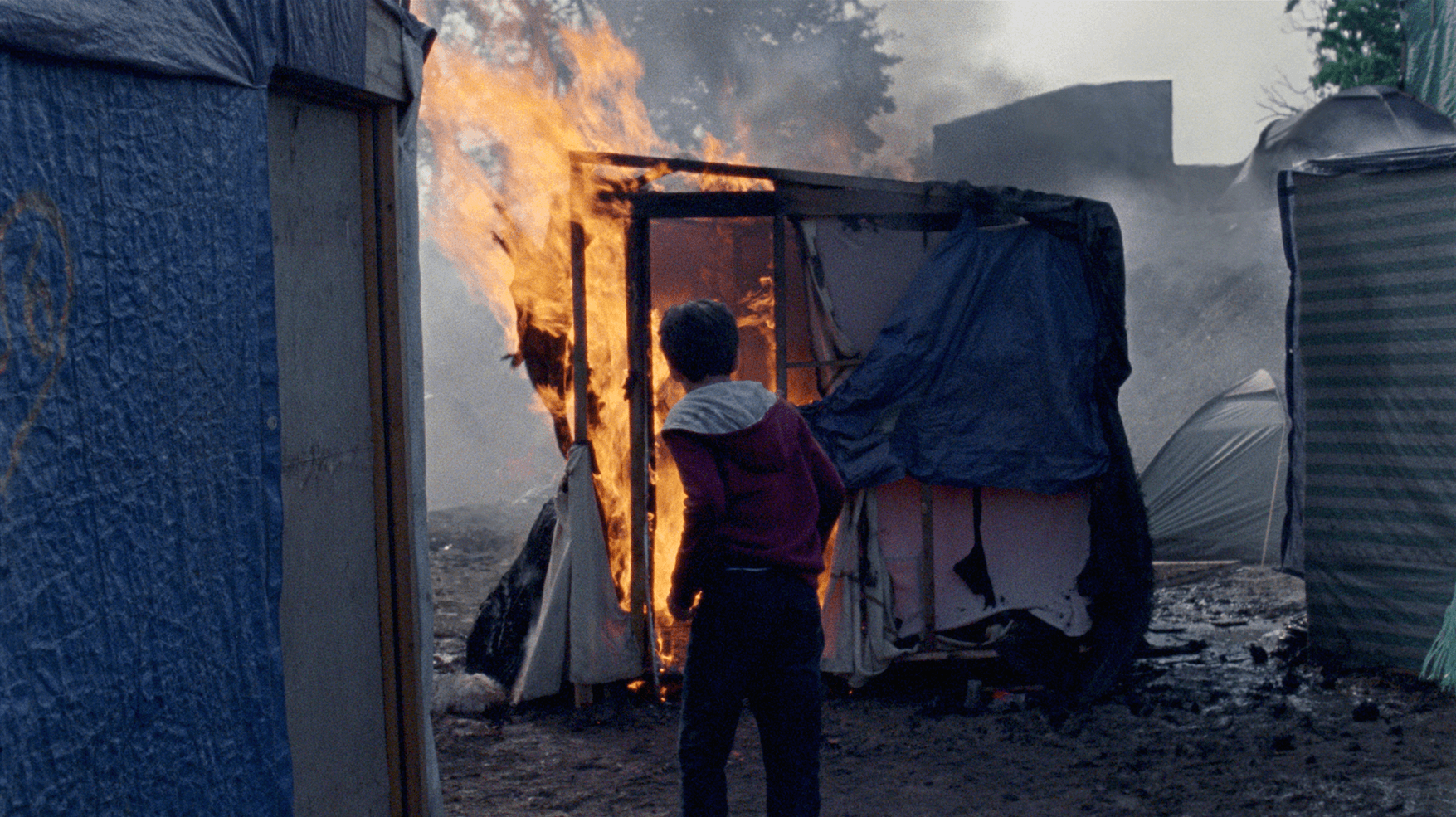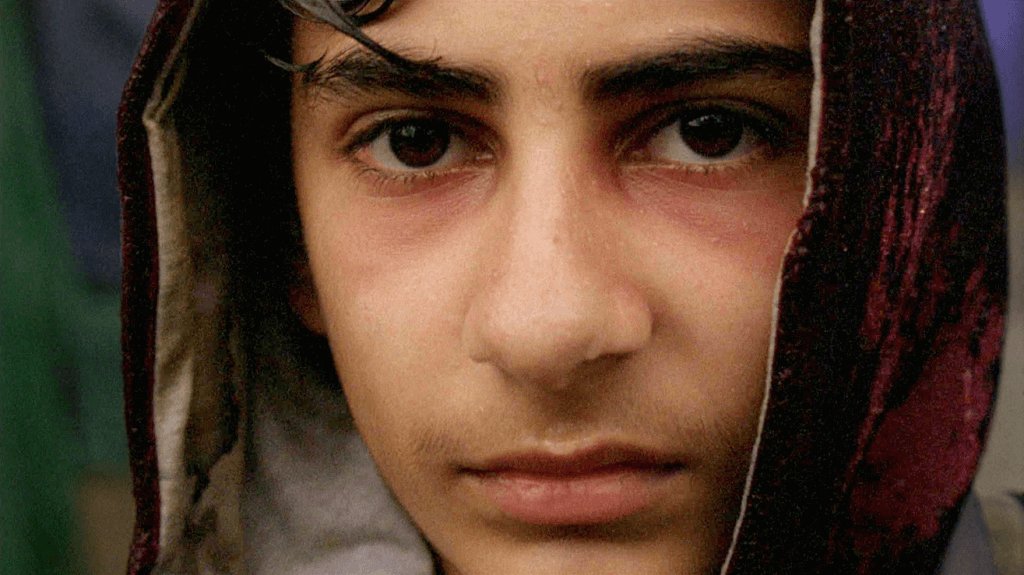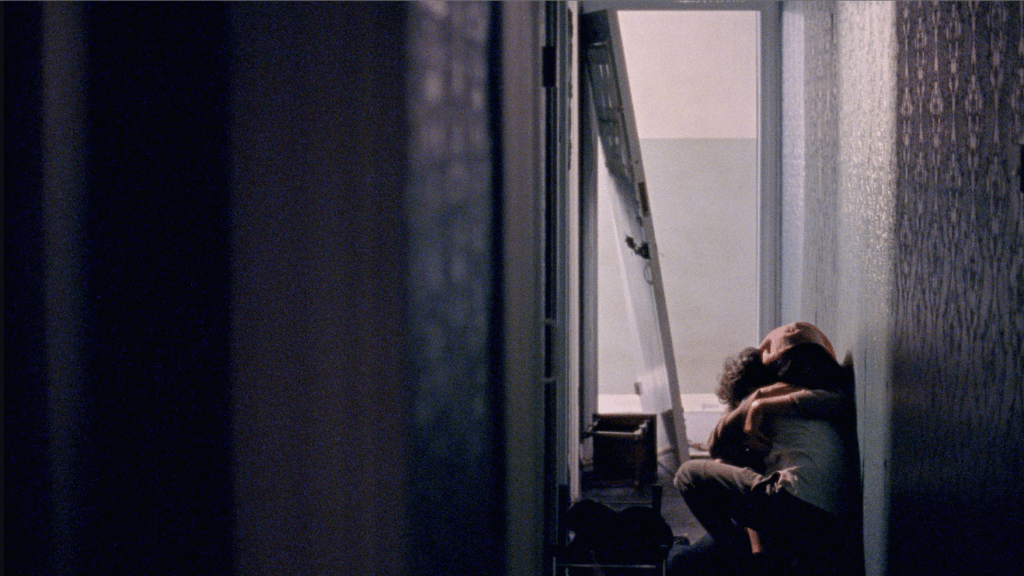Vika Evdokimenko: Child Refugees on the Brink with Aamir


We often hear stories of refugee camps on the news and in current events, but we rarely place a face on them; children throughout the world can experience this reality, but it comes so easy for some just to write them off as people in some far-off place that could never impact us. Aamir tells the story of one such child, one who is not only stuck in demoralizing conditions but is also cut off from his family and left alone in the world, with the story detailing his last chance at salvation with the help of a British volunteer. We interviewed the director, Vika Evdokimenko, to get a first-hand look at the story.
What inspired you to tell this real-life story?
In the winter of 2016 my co-writer Oliver and I were volunteering in the Calais ‘Jungle’. At the time it was Europe’s largest unofficial refugee camp. It has since become synonymous with the worst of Europe’s refugee crisis. I was volunteering at the L’Auberge warehouse while Oliver worked with a build crew that repaired shelters in the camp. One day he returned with a story of a 13 year old Afghan boy who he met that day. The boy had been driven to despair in his search for a door to his shelter so he could feel safe. Government assistance was absent from the camp and it was a purely volunteer-run, and donation-based effort, so the volunteer build crews had been unable to solve his problem for days. The deeply disturbed look in the boy’s blood-streaked eyes belied his 13 years and made his age impossible to guess: he had seen unimaginable horrors. In his sleep-deprived desperation, he pulled a small knife on the build crew. No one was hurt and the standoff was defused by a cool-headed, experienced volunteer. But the boy’s story stuck with me. I wanted to explore how a young person could get to such a point of despair. And how it was that in the Europe of today, governments could stand by while an unaccompanied child went without something as basic as a plywood door with a twenty pence padlock. We left the camp with the unsettling realization that the well-meaning and inspiring volunteers were up against a humanitarian crisis of global proportions that they were ill-equipped to deal with.
At the same time we’d been listening in consternation to the insatiable rise of anti-immigrant, hate-filled rhetoric across Europe. People like Farage were portraying these people as ‘invading hordes’, and stirring up tribal insecurities. The British government spent huge amounts of money on an enormous fence in a vain attempt to stop refugees getting onto the French side of the channel crossing, while claiming to lack even the modest resources needed to help the most at-risk, unaccompanied child refugees. Meanwhile the French chose to ignore the existence of the camp while their police used tear gas, batons and unmuzzled dogs in an attempt to contain a growing problem no one wanted to deal with. We wanted to dispel the fear borne myths being propagated in newspaper headlines, but we also wanted to avoid telling a sanctified version of the story that might preach to the choir but further polarize those not already in agreement.
With scenes depicting shootings, bug-infested food, and refugee camps, what was the hardest thing to film?
Depicting the true depth and scale of the humanitarian disaster on our doorstep was hugely challenging, but filming in the ‘Jungle’ itself was the biggest challenge to our production. I had been back and forth to the Calais ‘Jungle’ through the first half of 2016 to deepen my research and figure out how and if it might be possible to make a narrative film there. But on our first recce with our HOD’s, our DP Robbie Ryan commented that the ‘Jungle’ felt like a tinderbox. Some days it was quiet and calm but at the slightest provocation it could go up in flames. This is exactly what happened the weekend before we were supposed to head to Calais with a 20 person crew and our child actor.
On May 28th a fight between the Afghans and the Sudanese broke out in a queue and spread through the camp like wildfire. Someone was shot, three volunteers were hurt, and dozens of refugees were injured. By the following morning the Sudanese section of the camp where we had planned to shoot had burned down. We had scenes involving knives and fire and so we decided to shoot these more complex scenes on our set which was extended and adapted to accommodate these extra scenes by the incredible Jacqueline Abrahams and her tiny art department.
When we did go into the ‘Jungle’ to shoot, it was with a skeleton crew and accompanied by community leaders and volunteers from local charities who ensured that the camp’s residents were aware of our presence and intentions. We were very conscious that the ‘Jungle’ wasn’t just a ‘location’. We were going into people’s homes and it was on us to be respectful and to not objectify the refugees whose lives we were there to depict.

According to a press release, originally, the production team wanted to cast a real-life child refugee, but it was said that the children that were interviewed disappeared. Can you shed more light on this?
When we started pre-production we wanted to cast an unaccompanied child refugee from the ‘Jungle’ to play Aamir as I’d had many successful experiences directing non-actors in the past. But we soon found that in this case it was going to be impossible. The children we talked to there were so deeply traumatized by what they had been through that we couldn’t imagine asking them to relive the traumatic experiences that must have been so raw in their minds. As you mentioned, even more disturbing was the fact that every time we’d return to the camp, we weren’t able to track down the same children we’d spoken to on our last visit. They kept disappearing. These kids were so desperate to leave the camp and get to the UK that every night they’d try to escape, some turning to the often dubious help offered by smugglers, others risking life and limb unassisted by jumping onto lorries bound for the UK. If anything, this first, failed attempt at casting reiterated quite how much this story needs to be told.

Can you explain the smoking scene more in-depth?
We met another young man in the Jungle who recounted an experience soon after arriving in the camp. He was completely alone, and though he’d received some help from volunteers was so terrified and lonely that he’d been suffering symptoms of psychosis from prolonged sleep deprivation (many residents never felt safe enough to sleep with both eyes closed). He eventually thought he’d made friends with some countrymen but they tricked him into smoking a cigarette laced with strong hashish to which he was unaccustomed and tried to mug him. He was able to fight back and escape but the experience left him too scared to reach out to others. In such places both children and adults are often driven to horrible extremes to compete for scarce resources just to survive and it’s hard to imagine how anyone could weather the strain of living in such a place alone.
That said, one of the most inspiring things about the camp was how communities formed, bounded together and looked after one another with ingenuity, resilience and generosity. Shelters were often grouped together in little hamlets creating courtyards where people would gather to drink tea and eat together. On so many occasions we were invited into people’s shelters and they would share with us delicious meals they had somehow managed to put together on tiny camping stoves. Despite the adverse conditions, refugees in the camp somehow managed to hold on to their sense of community and hospitality.
Katlyn is well-meaning but also seems a bit over her head with trying to help the refugees. What are we meant to think of her character?
It’s important to remember that the volunteer effort in places like Calais is made up of ordinary people who were on the most part not trained to deal with humanitarian disasters. They had been so moved by the plight of refugees, forced from their homes by war, and so disgusted by the lack of action from government, that they decided to do whatever they could to help by working with independent, small charities. There was little NGO presence in the camp, and no government resources: no UN and none of their resources.
Katlyn is based on a number of male and female volunteers we met in the camp but Jasmine is an absolute pro and did her own character research on top of that, talking extensively with one of her friends who’d volunteered in Calais.
Of the volunteers we met, many were in Calais for a few days or a week of holiday leave. Others had left their jobs, families and lives to volunteer in the ‘Jungle’ long term, bringing whatever skills or professional know-how they happened to have at their disposal. We’re talking six months to a year of living unpaid in very basic conditions in trailers, shared housing around Calais, or in shelters in the ‘Jungle’ itself. These people were badass, multi talented, kind, generous (perhaps to a fault), resilient, incredibly inspiring, and yet ordinary.
What was heartbreaking was that, despite the undeniable difference the volunteers were making to countless individuals, their overall efforts felt like drawing in the sand. The humanitarian crisis that the British and French governments were choosing to ignore was deepening everyday and their (entirely donated) resources felt tragically insufficient. The volunteers were the first to admit that despite their best efforts, many people fell through the gaps. I wanted Katlyn to embody this genuine goodness of heart and intent, but also this feeling of struggling against the tide.
If possible, what is the significance of the burning tent at the end of the film?
I would prefer for audiences to draw their own conclusions about the final image of the film but I can furnish you with a few ideas to think about. Firstly, fires were very common in the camp. Shelters were built of very simple materials and could easily catch fire. The camp was often not a peaceful place, it being home to fifteen different nationalities of refugees. Tensions would frequently run high amongst desperate people.
Aamir’s final act is both a child (that I hope we’ve come to empathise with) acting out at the incredible injustices he’s experienced, and also a warning of what can happen if we turn our backs on these young people. All humans are capable of violence if they are made to become desperate and disenfranchised.
The latest numbers from UNICEF indicate that there are some 170’000 unaccompanied child refugees registered in Europe in 2015 and 2016. This huge number is made up individual human children, just like Aamir, travelling from war zones, across continents, all on their own. If they are not helped, these children stand a good chance of trusting their luck with human traffickers, and many will end up in human slavery, prostitution or even organ harvesting.
In the news, fires in the camps were often paired with fear-laden tribalism and anti-immigrant rhetoric about ‘invading hordes’, and the like. This film is about looking beyond the statistics in the headlines to recognise the individual human lives at stake and that this situation is a blemish on our national conscience.

What message do you want to send with the film?
It’s definitely my hope that the film can serve as a conversation starter about the refugee crisis, especially among people who don’t already agree on this issue. I hope that by not sanctifying Aamir and presenting him instead as someone who can get angry and frustrated like the rest of us, more people would be able to relate to the character. The idea with this project was to not just to preach to the converted but to also try to engage with a more centrist or even right wing audience in the hope that they too might be able to empathise with a young person like Aamir.
This issue has also become very politicised here in the UK. Recently our government has refused to honor it’s commitment to shelter even the modest number of unaccompanied children they agreed to under the Dubs amendment, despite councils volunteering thousands of spaces. So it’s my hope that winning over hearts and minds could help to bring these issues back into mainstream political debate. Living in places like the UK and the US I think we forget that we are enormously privileged, and with that privilege inevitably comes some responsibility. I find it a great source of shame that our nation, one of the leading economies in the world, is doing so little to help the situation it bears some responsibility for creating, and arguably profits from.
What are some other projects you are working on for the future?
Since graduating from NYU I’ve spent most of my time travelling, writing screenplays and making films with my husband and partner in crime Oliver Shuster. Our next project is a feature-length take on the road movie about a father and daughter who disagree on everything from politics to ice cream flavours but find themselves trapped in a taxi bound for the airport. It’s a comedy drama about our (in)ability to listen to one another and a kind of absurdist allegory of our polarized world of media bubbles and short attention spans. It’s a kind of ‘Locke’ meets ‘Toni Erdmann’ and we hope to go into production in autumn 2018.
Responses